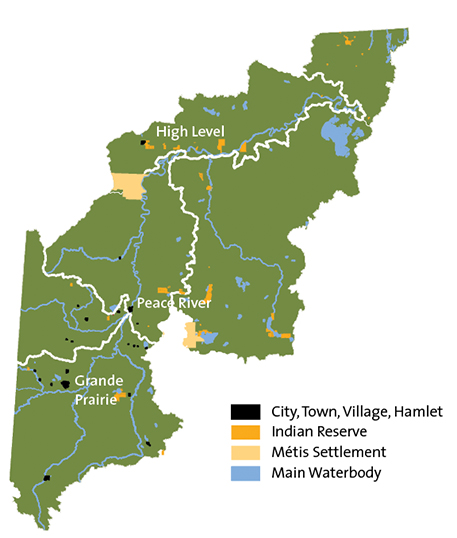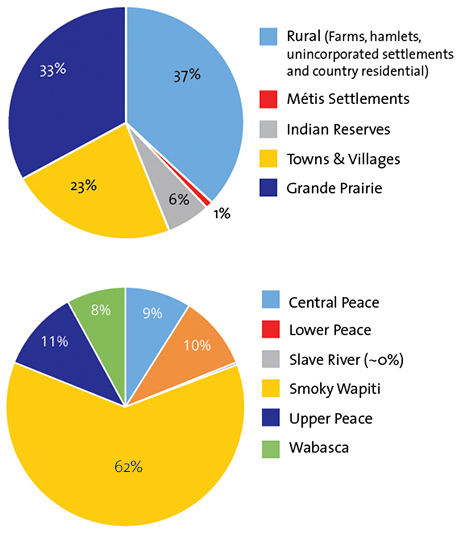PeopleThe first humans arrived in the Peace River region more than 10,000 years ago across a land bridge between Asia and North America. It is thought they followed the great herds of bison and other grazing animals. By the time Europeans arrived, at least two distinct cultural groups, the Athapaskan-speaking Dunne-za (Beaver) and Dene-tha (Slavey), had been living in the area for generations. Woodland Cree, originally from the Hudson Bay region, moved into the area over the next century or so, working as trappers and middlemen for European fur traders. Tension between the Cree and Beaver were reportedly settled around 1782 at Peace Point in what is now Wood Buffalo National Park. The "River of Beavers" that divided their territories became known as "Unchaga," the Beaver word for Peace. Today that river's watershed is known as the Peace River Country.6 By 1788, both Fort Vermilion and Fort Chipewyan, the two oldest European settlements in Alberta, were attracting fur traders. This was accompanied by a growing number of children born of Indian mothers and fur-trading fathers. They would become the Métis Nation in Northern Alberta.7 Missionaries followed the fur trade as it expanded westward, building churches and schools. In the late 1800s and early 1900s, treaties established Aboriginal reserves and provincial statutes established Métis settlements. Gold-seekers and European settlers opened up land for homesteading, using steamboats on the river, and building networks of roads and railways. According to the 2011 census, some 165,000 people live in the watershed. Grande Prairie, with a population of slightly more than 55,000, is the only city in the watershed and ranks as one of the fastest-growing municipalities in the province. Towns, villages, hamlets, First Nations reserves and Métis settlements are scattered throughout the watershed. For a more detailed look at population distribution, see the sub-watershed appendices. Many people in the region are employed by resource-based industries, including agriculture, conventional and in situ oil and gas, forestry, mining (aggregate and coal), tourism, and recreation. The combined effects of water use, infrastructure needs, agriculture, industry, forestry, and resource extraction impose stresses on the water, the lands and the ecosystem. Measuring, evaluating and comparing stresses and understanding how they interact will be an ongoing challenge.
|  
Source: Statistics Canada
|
| © 2015 Mighty Peace Watershed Alliance | CONTACT THE ALLIANCE | NEXT PAGE: Get to Know the Watershed |